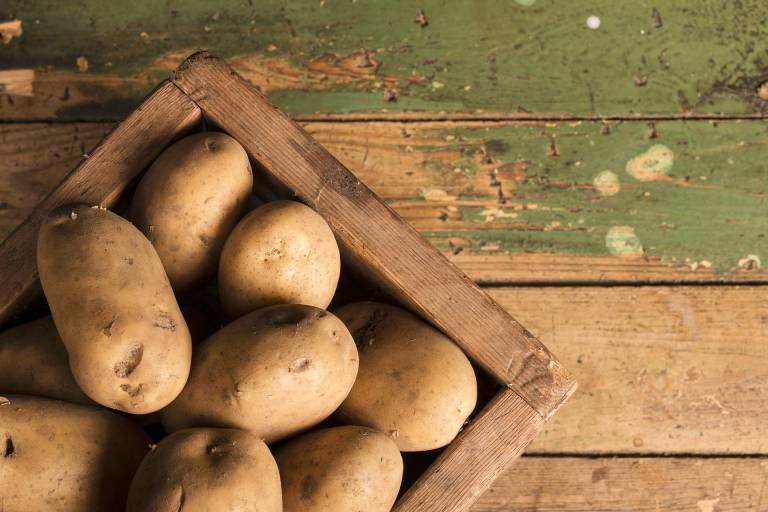The Non-GMO Project evaluates key criteria to determine when a crop needs to be upgraded to the High-Risk list. These criteria include the number of acres planted, the degree of presence in the supply chain, and the potential for use in human food or animal feed. When these factors reach a predetermined threshold, the crop is recommended for addition to the High-Risk list.
The genetically modified potato has now met this threshold. This means that products made with potato will be subject to extra scrutiny before they can become Non-GMO Project Verified.
The Genetically Modified Potato
Potatoes have a gene that causes them to bruise when damaged. In these new GMO potatoes, that gene has been silenced so it cannot be expressed. The potato still gets damaged, but the symptoms are hidden from view-and from the consumer. This is not the only modification made to these potatoes; they have also been altered to produce lower levels of acrylamide when cooked.
The GMO potato has been engineered through a method of gene silencing called RNA interference (RNAi). This genetic engineering technique results in a potato that hides the symptoms of blackspot bruising rather than preventing it. Currently, GMO potatoes are being marketed under the Simplot Innate brand, most commonly found under the trademark White Russet. The Non-GMO Project's full-time research team has kept a watchful eye on these potatoes since their debut and continues to monitor their presence in the North American food supply.
To understand RNA interference, it is important to know that messenger RNA (mRNA) carries genetic instructions from the cell nucleus out to other parts of a cell. RNAi begins when a different type of RNA (dsRNA) is placed inside a cell. The dsRNA gets cut up by enzymes, paired up with proteins, and then ends up binding to a specific target site where it fits on the mRNA. This can prevent the mRNA from delivering all of its instructions, effectively "silencing" the desired gene. In the potato's case, the gene being silenced is the one that causes browning.
What is the High-Risk List?
The potato has been added to the High-Risk list of the Non-GMO Project Standard because GMO versions of the potato are now "widely commercially available" in the United States.
The Non-GMO Project Standard is the controlling document that defines the requirements for a product to be Non-GMO Project Verified. It lays out all the rules for testing, traceability, segregation, and inspections. The Standard also classifies crops and other inputs by risk level based on how likely they are to come from biotechnology. The High-Risk list includes inputs for which genetically modified versions are widely commercially available. The Monitored-Risk list includes inputs for which genetically modified versions exist, but are not yet widely commercially available. Crops on the High-Risk list are subject to stricter evaluation under the Standard.
Pandora's Potatoes
You may have heard of Dr. Caius Rommens, the scientist who developed the Simplot potatoes. Dr. Rommens recently released a book called Pandora's Potatoes, in which he heavily criticizes the very same GMO potatoes he created and comes clean about the mistakes he made while making them. His book is full of difficult truths about the pro-GMO bias that led him to overlook unfavorable results, the financial pressures that can overpower good science, and the unfortunate realities of off-target effects in gene editing. In a recently published article, he writes:
It was as hard for me to consider that my GMO varieties might be corrupted as it is for parents to doubt the perfection of their children. Our assumption was that GMOs are safe. But my pro-biotech filter eventually wore thin and finally shattered entirely.Once these novel life forms are released into the world, there is no calling them back into the lab. They aren't being regulated and there is no way to know the long-term impacts of these new technologies. The Non-GMO Project's dedicated research team continues to follow the development of new GMOs like the RNAi potato so you can have the right to know what's in your food.
I identified some minor mistakes and had my first doubts about the products of my work. I wanted to re-evaluate our program and slow it down, but it was too little too late. Business leaders were involved now. They saw dollar signs. They wanted to expand and speed-up the program, not slow it down.
Have questions? Post a comment or contact us at info@nongmoproject.org




Just for increased profit margins.
Its a sin of the highest order imho.
"Science is but a perversion of itself unless it has as its ultimate goal the betterment of humanity.” N Tesla